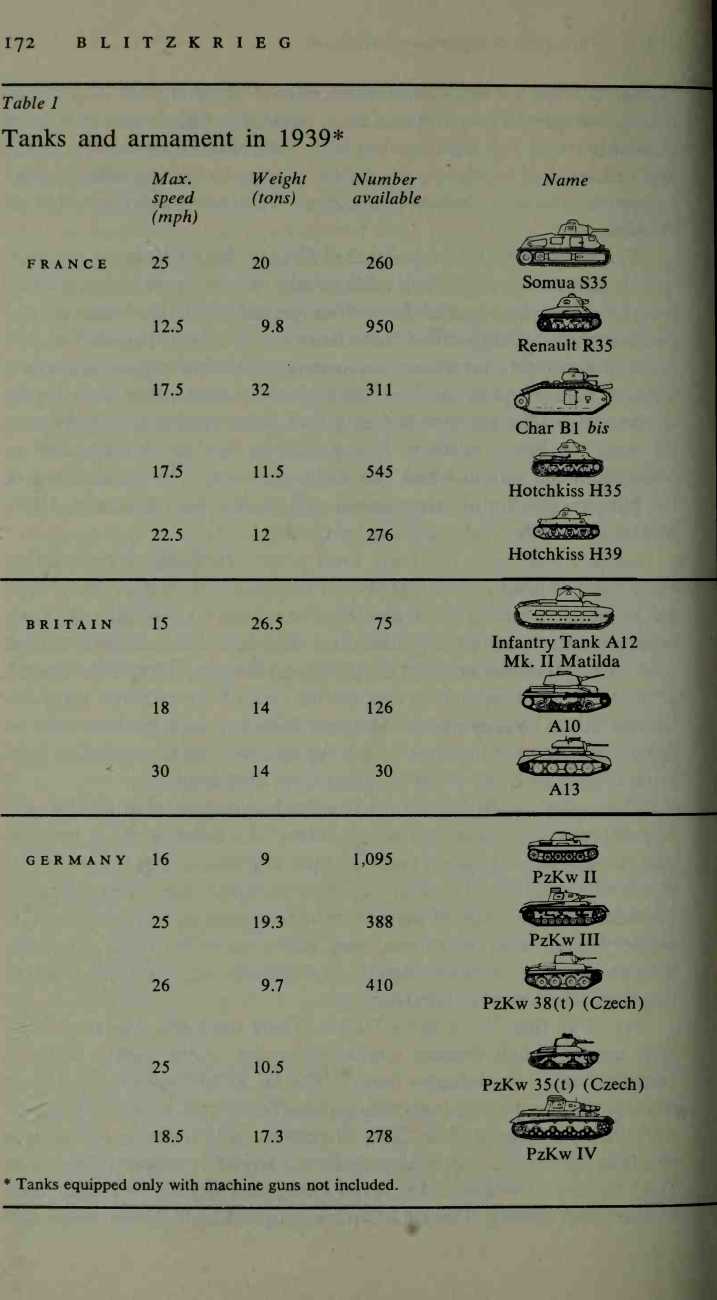In prewar France Colonel Charles de Gaulle had emerged as the best-known advocate of tank warfare. In 1933 he published his book Vers Varmee de metier (Toward a Professional Army). Even the title was enough to provoke anger in many of his fellow soldiers at a time when the army was asking that the length of compulsory military service be extended. Socialists and Communists were alarmed at what they immediately interpreted as a proposal for a small elite force that would have political power. The top brass saw it as criticism of their faultless skills and ordered that all future articles or lectures by serving officers must be approved by them before publication. This successfully quashed all discussion.
The book set out a proposal that France should have an armored mobile force of professional soldiers who would protect the country from invasion during that hazardous period when the reserves and conscripts were being called into the army. It established de Gaulle’s position as a man who wanted an armored force but suggested no new ways of using it. The air force was given no role other than laying smoke screens for the mobile forces, but great emphasis was given to the need for heavy artillery. It was evident that de Gaulle failed to understand the way in which the Luftwaffe was to be the artillery of the blitzkrieg. After his experiences with the German Stukas in 1940, de Gaulle modified later editions of his book.
Liddell Hart gave the book faint praise. He pointed out that de Gaulle had not served with tanks, so his view was “rather hazy” and his proposed armored force too large to maneuver. German tank experts gave the book passing attention, and in France the first edition sold only 750 copies and had no effect on official opinion. Few French politicians were prepared to support the cost of the armored force described in the book when the Maginot Line had cost the taxpayers so much. Where would we put such a force, asked some sarcastic critics of de Gaulle, in front of the Maginot Line or behind it?
During the 1930s French cavalrymen had realized that there would be no combat role for the horse in modem war. Already using armored cars, the cavalry was given tanks and put together a “light mechanized division.” This DLM {division legere mecanique) combined a brigade of tanks with a brigade of motorized infantry and added a regiment of artillery, a regiment of armored cars, and some motorcycles. Together with an engineer battalion, signals, and various support units, this was the world’s first armored division.
By 1940 there were three DLMs. Their weakness was the obsession among Anglo-French commanders that tanks must either be “cavalry tanks” or “infantry tanks.” The DLM had been formed from cavalry regiments. So, even though the DLM had most of France’s finest tanks—Somua S35s and Hotchkiss H39s—its function was henceforward to be restricted to what the High Command persisted in thinking of as “cavalry tasks,” even though cavalry had not been used in the previous war. The DLMs were assigned to reconnaissance and

“scouting,” providing what outdated textbooks called a “forward protective screen.” It was another way of saying, “Spread thinly in front of the invading spearheads.” Deployed like this, their destruction was inevitable.
By the time the Second World War began, French tank resources were at least equal to those of the Germans in both quality and quantity. Even General Gamelin was later to admit that the French tank force was better equipped to deal with German tanks than the Germans were to deal with the French ones. But French tanks were not properly organized. They were in tank battalions assigned to infantry units or kept in a general reserve. Only in 1939 did the French Army form its first real armored division (division cuirassee). In an overreaction to the years of delay and in keeping with the “all-tank army” theories, the division was given a very high ratio of tanks. It was a long way from the “miniature army” ideas of Guderian. At the time of the German attack, French armored divisions were virtually untrained and lack of coordination with other elements was made worse by a grave shortage of tank radios.




 World History
World History









